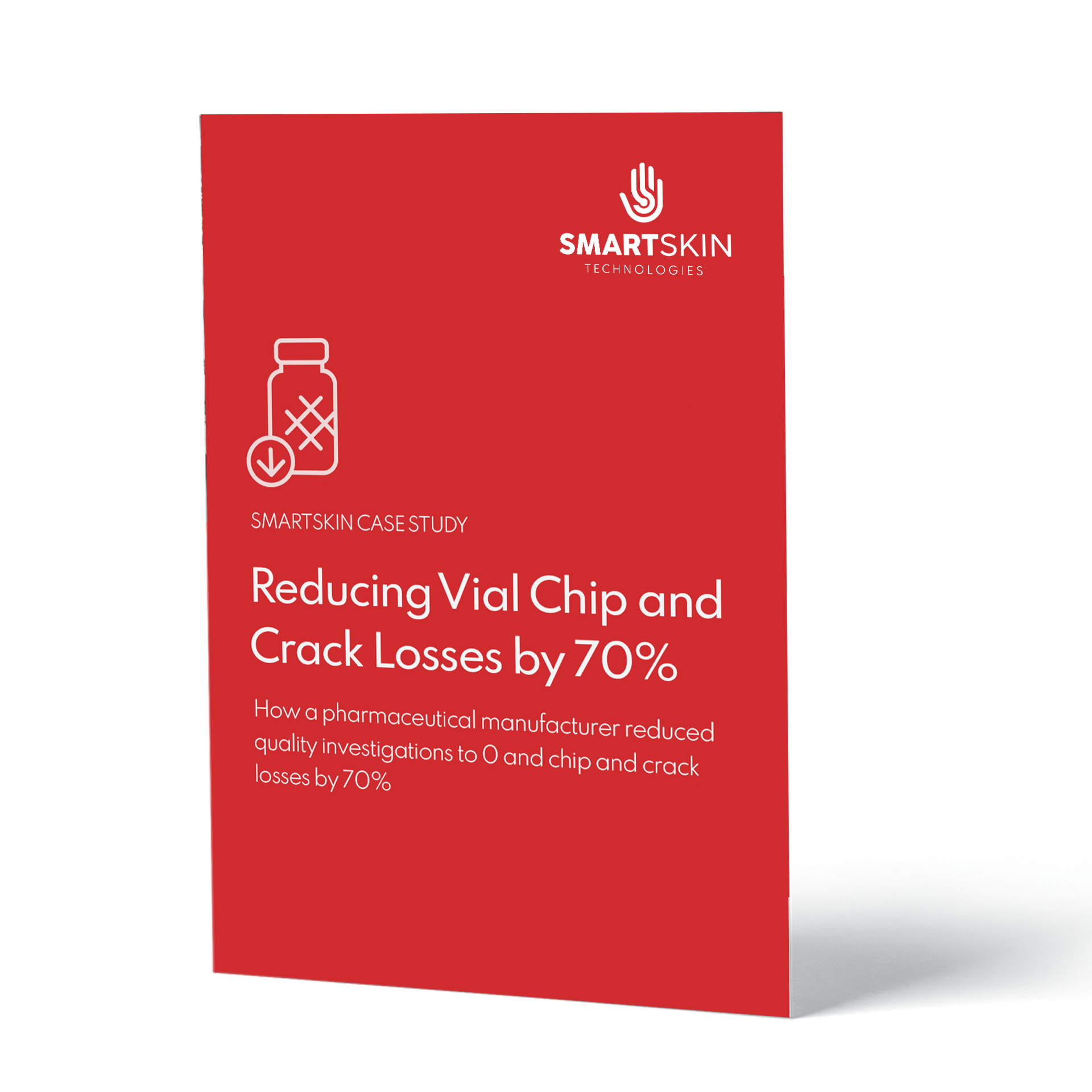
From Finger-Pointing to Fact-Finding: Tackling Glass Vials Breakage in Pharma Manufacturing with Smart Technology
Martin Van Trieste is an accomplished entrepreneur, board governance expert, executive coach and biopharmaceutical executive. Martin is the President Emeritus. He was the founder and CEO of Civic Rx, and was previously Amgen’s Chief Quality Officer. He also serves on the boards for Redica Systems. In 2023, SmartSkin was honoured to welcome Martin Van Trieste as Chair of its Board of Directors. Throughout his career, Martin has been passionate about serving patients, changing quality cultures, quality improvement and compliance initiatives in complex biotechnology, pharmaceutical and medical device manufacturing environments.

Like many others in the sterile drug manufacturing profession, I dealt with glass issues on a manufacturing line during my career, such as scratched or cracked vials. I also experienced the need for more capacity and higher yields from a particular line. Any potential sterility assurance issue or needed capacity for an important product would cause the organization to move into high gear to regain control or improve the yield of the process.
Cracked or damaged glass vials in pharmaceutical manufacturing can lead to product loss, contamination, and downtime. SmartSkin Technologies solves this with sensor-based container twins that simulate vial handling in real-time—helping manufacturers detect root causes, optimize equipment setup, and prevent breakage before it happens.
A Familiar Story: Cracked Vials and the Cycle of Blame in Pharma Manufacturing
For glass defects, the first reaction would be to call the glass manufacturers to complain about their glass and process. We would then send samples to the glass manufacturer for investigation. This would then start a month-long process of finger-pointing between my team and the glass manufacturer. During this time, we would send samples to an outside lab for more data. Most of the time, after months of back-and-forth and investigations on our line and at the glass manufacturer, we learned that something was awry within my operation.
The need to improve capacity or yields would immediately launch process improvement teams to drop everything they did to study how to increase capacity or yields using various continuous improvement tools, like Lean Six Sigma.
Why Vial Damage is often Misdiagnosed in Pharmaceutical Production
Why did my team immediately point the finger at the glass manufacturer? Why did it take months to find the root cause and correct the problem? Why were teams launched that could be working on something else of value? I propose that we did not have the best approach and technology to do the FAT (Factory Acceptance Testing), line set-up or problem detection.
Today, there are advancements in technology that would eliminate these problems. Equipment issues would be detected during Factory Acceptance Testing and corrected before being delivered to the drug plant. Line setup prior to manufacturing would be done correctly, preventing problems. In-process line monitoring would be more effective.
From Insight to Action: How Smart Sensors and Container Twins Reshape Pharma Operations
Today, we are no longer limited to reactive problem-solving or time-consuming blame games. New technologies offer proactive solutions that detect issues early and help prevent them altogether.
Smart sensor technologies, like those developed by SmartSkin Technologies, now allow pharmaceutical manufacturers to simulate the physical stress on containers before, during, and after filling. These pressure-sensitive, wireless devices can be used during Factory Acceptance Testing (FAT), Initial Line Qualifications, Daily Line Setups and Line Change Overs to detect misalignments, harsh mechanical movements, or excessive force that could damage containers. Rather than waiting for damaged vials to show up in a rejection bin or—worse—after a sterility failure, we now gain real-time data to optimize handling processes from day one.
Detecting Force, Friction, and other Stresses Before Vial Breakage Occurs
Furthermore, container twins of packaging lines can now model container flow under simulated production conditions. These predictive analytics tools help engineers foresee problems like excessive agitation or improper alignment, allowing corrections before a line goes live. This ensures that equipment received from vendors meets operational requirements, rather than learning through failure after installation.
In addition, AI-driven machine vision systems from companies like Cognex, Antares Vision Group, and others now inspect every vial with high-speed cameras and deep learning algorithms, catching subtle visual defects like micro-scratches, improper fill levels, and misplaced stoppers. These tools identify defects more accurately than humans and provide insights into trends, highlighting potential upstream causes like defective change parts, lubrication issues, or temperature-induced stress on containers
Turning Smart Data into Smarter Pharma Processes
Even traditional continuous improvement efforts benefit from these technologies. Data collected from these smart systems can be fed into process control dashboards, helping Lean Six Sigma teams identify bottlenecks, fine-tune variables, and rapidly validate improvements. Instead of relying solely on physical audits or retrospective analysis, these teams work with real-time, actionable data.
With these advancements, the manufacturing floor is no longer blind to the minute forces and stresses that cause yield loss and sterility risks. Teams no longer need to spend months guessing what went wrong. With the right technology, they know immediately and prevent the problem before it happens.
The future of sterile drug manufacturing is not just about making more vials or reducing downtime. It is about transforming how we understand our processes, handle our materials, and protect the patients we serve. And with today’s tools, that future is finally within reach.


